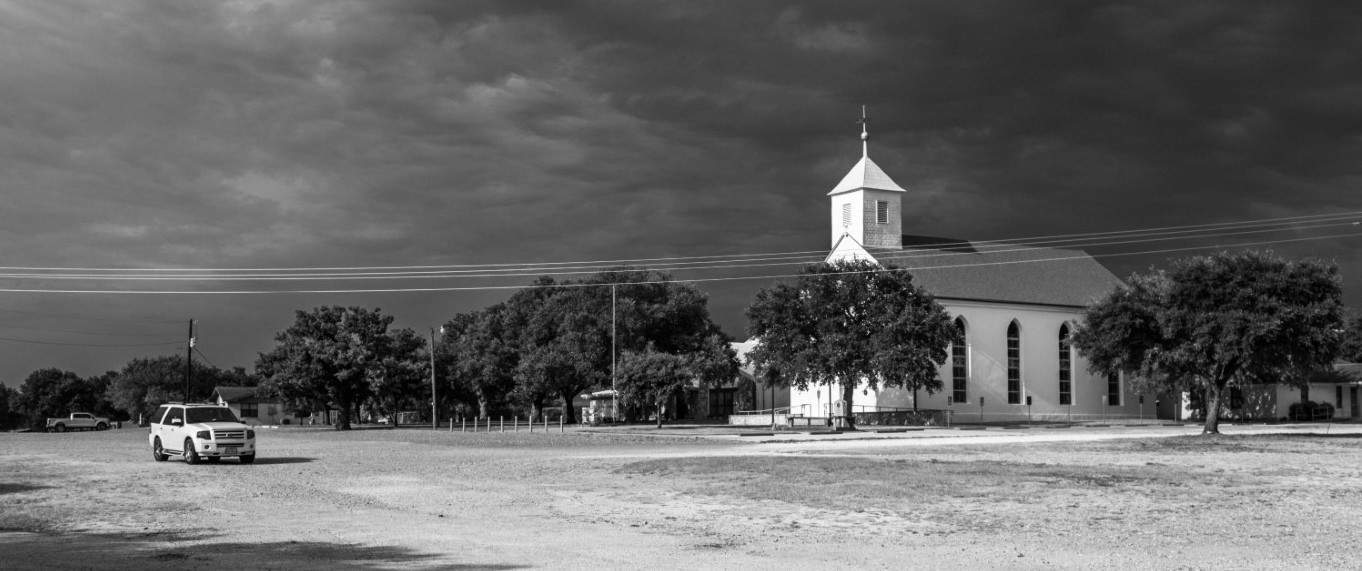
Backroads Discovery
How 19th century Christians found freedom in Texas
Photographer, writer, and historian Jeremy Clifton feels most at home in rural America, traveling the backroads of Texas to explore two of his top interests – old churches and barbecue! But the weekend road warrior didn’t expect to unearth the little known history of early settlers who arrived on Texas shores to escape religious persecution in their home regions of Saxony and Prussia.
In Part 1 of Jeremy’s story, he recounts two journeys – the one that changed his life and the historical journey that changed the lives of hundreds of Wendish Lutheran immigrants who survived persecution, rough seas, and diseases to settle Lee County, Texas.
Table of Contents
Story & photos by Jeremy Clifton
Storyteller
It’s Saturday, June 6, 2015, at about 8:45am. My trusty 1999 Ford Crown Victoria is sailing down FM 2104 at about 70 miles per hour in rural Bastrop County, Texas
It’s a cliché that a journey of a thousand miles starts with a single step. The one I’m on at the moment will clock in at around 150 miles, but what I don’t realize at the time is that it’s going to be the first segment on a really long journey that will involve me putting at least 5,000 on my vehicle over the course of the next three and a half years and change the course of my life.

At the time I’d lived in Texas for a little less than three months. For the most part, I don’t know anybody in Austin, my new home. I’m an introvert, and a country boy at heart, so it seems very appealing to pick a destination outside of the city every other weekend or so and see what Texas has to offer.
So far I’d taken a handful of these weekend road trips, and at the time there was no reason to expect that this one would be much different. Today I’m heading to Serbin, Texas, a tiny, unincorporated community of about 90 people.
But today is different, for several reasons. I don’t have any personal connection to any of the other places I’ve visited over the last few months, nor had I visited them before.
Serbin is different.
You see, my two children from my first marriage, Autumn and Christopher, trace their roots back to Serbin through their mother. Back in late 1854, their great-great-great-great-grandfather, his father, and just under 600 other people had left their homes and everything they knew in eastern Germany, in a region called Lusatia, to start a new life in Texas, in what is now the southern part of Lee County.
Who are the Wends?
Autumn and Christopher’s family, the Groeschel family, were what we in Texas call Wendish. In Europe, the preferred term is “Sorbian.”
“Wendish” is considered to be more of an ethnic slur, but here in North America it’s now worn as a badge of honor.
The Wends in Texas descend from a Slavic ethnic minority in what was at the time a patchwork of German-speaking territories and kingdoms with ever-changing borders. Though they had lived there for hundreds of years, to some extent they are strangers in a strange land, speaking one of two Sorbian dialects (Upper Sorbian is somewhat similar to Czech, and Lower Sorbian is somewhat similar to Polish), and having different customs and different dress.
Over the years they faced waxing and waning discrimination as well as pressure to assimilate and become like the Germans that they lived among. They also faced pressures within the state churches where they live to compromise their conservative Lutheran faith. In the end, many decided to immigrate, including the nearly 600 Wends that came to Texas with the Groeschel family.
Around 120 years after their arrival in Texas, a group of folks who are descendants of Texas Wendish settlers set up what becomes the Texas Wendish Heritage Society, and eventually in the fall of 1988 they hold the first Wendish Fest, which has become an annual festival celebrating Wendish culture.
For the most part, this is my understanding of the Wendish story in 2015. When I arrive in Lee County, I’m not expecting to learn more. I’ve been to Serbin a number of times, and I just want to see the church and cemetery again, check out the beautiful courthouse in Giddings, and explore the county and see what there is to see.
I’m partly wanting to have some interesting photos and information to send to my children when I write my next letter … photos and information that will have a personal connection for them.
I’m about to be surprised.
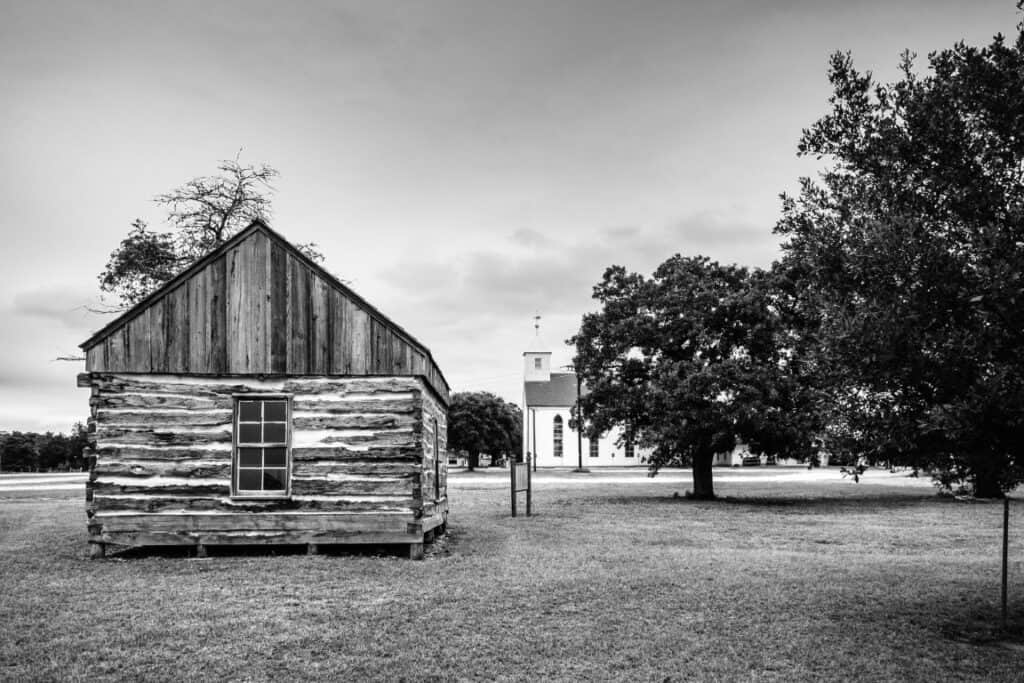
One half of the 1855 dogtrot cabin that served as Pastor Kilian’s resident and initially utilized for the congregations services and school still stands just west of the nearly one-hundred-fifty year old stone church still utilized today.
Wendish roots in Lee County, Texas
As long as I can remember, I’ve liked looking at old country churches. One of my earliest memories is of admiring a painting that hung in the rural North Carolina Baptist church that I grew up in. It depicted the old white clapboard church that had predated the one now in use.
I wished I could go back into the distant past (at least at the time the 20 that had passed since it had been demolished seemed like the distant past) and see it. I loved to hear the older members talk about their memories of it. It wasn’t long after I started my weekend road trips that I began looking for old churches to photograph along the way.
Today I have a short list of churches to photograph. Most of them are Lutheran churches, partly because I’m now Lutheran, and partly because it just so happens that there are a lot of Lutheran churches in Lee County.
And so after I make my stop in Serbin and check out the church, wander through the cemetery and find the tombstones that mark where my children’s family await the resurrection, I head into Giddings, visit the courthouse, grab some lunch at Dairy Queen, and then head north to see a few churches.
As I walk through the cemeteries at these churches, I notice that there are a lot of names that I know enough to know aren’t German. Names like Dube, Symmank, Urban, and Falke. Names that I know are Wendish. This was probably my first inkling that the Wendish story was much bigger than what I knew at the time.
Around the same time I discovered that there were quite a few members with Wendish roots at my own church in Austin, St. Paul’s Lutheran Church. And then later that year, I was driving home from Gatesville when I took a quick detour to visit Immanuel Lutheran Church north of Copperas Cove, and I noticed this interesting tidbit on their historical marker: “This congregation traces its origin to the emigration of Wends from the Saxony Region of Germany to nearby Lee, Robertson, and Fayette counties. They resettled in this area, then known as the Twin Mountain Community, in 1891.”
Mind you, it’s over 100 miles from Copperas Cove to Serbin. What were Wends doing all the way out here in 1891?
Soon, my desire to understand this story turned into a bit of an obsession. And soon I began to learn the rest of the story … a story that probably didn’t end in a way that any of the Wends who immigrated to Texas imagined.
My desire to understand this story turned into a bit of an obsession … what were the Wends doing out here in 1891?
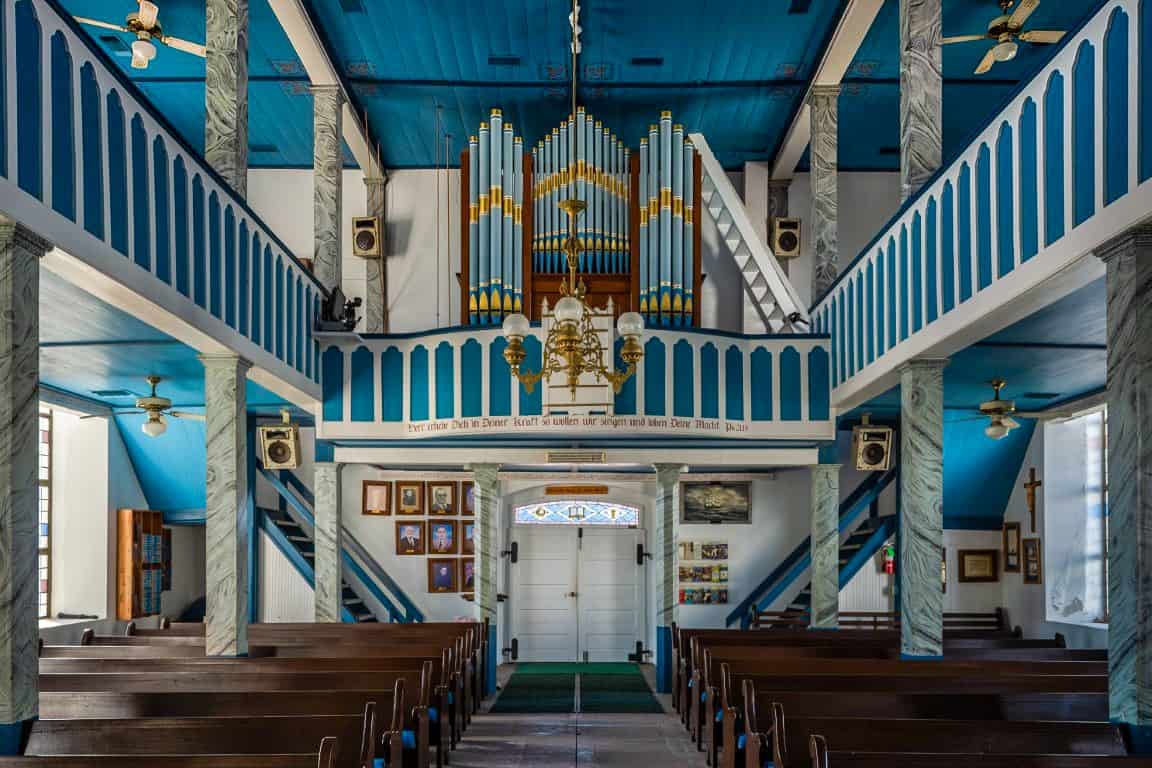
The organ in St. Paul’s Lutheran Church was installed in 1904 as part of the congregation’s fiftieth anniversary celebration. It is one of a few known organs constructed by E. Pfeifer and Son of Austin, Texas, and was originally hand-pumped.
What the 18th & 19th centuries were like for Lutherans in Saxony & Prussia
To understand why the Wends came to Texas and how those experiences set the stage for what happened once they arrived, we need to go back in time to the end of the 18th century.
Way back in 1797, over 50 years before the Wends boarded the Ben Nevis, Friedrich Wilhelm III was crowned king of Prussia. Germany as we know it today did not yet exist, and Prussia was one of many Germanic kingdoms in Europe.
Friedrich Wilhelm III had a problem that had been a thorn in the side of his predecessors for nearly 200 years. That problem was that there were two state churches in Prussia. There was the older Lutheran church, and the slightly newer Reformed church. For some time, the Prussian government had wanted to consolidate them into a single state church, but nobody had been able to do so thus far.
Friedrich Wilhelm III was determined to finally solve this 200-year-old problem, and only a few months into his reign, in January of 1798, he took the first step toward doing so. He announced that the government was going to create a new common worship agenda for the Lutheran and Reformed churches in his realm.
The problem with this is that traditional Lutheran and Reformed theologies are in some areas fundamentally incompatible. For some folks in Prussia, theology wasn’t a big deal. But for other conservative Lutheran and Reformed Christians, any common worship agenda would involve compromise of their theological positions.
For Lutherans, this would mean giving up distinctives such as a communion service that explicitly confessed the real presence of Christ in the Lord’s Supper. For Reformed Christians, it would mean the introduction of elements to the service that they saw as “too Catholic” such as candles on the altar.
But for the most part, for many years this grand plan seemed no more real than any of the previous plans to unite the churches. Government being government, progress on the common agenda was painfully slow. In fact, nearly 20 years after work on it first began, when Friedrich Wilhelm III decided to mark the 300th anniversary of the Reformation in 1817 by merging the Lutheran and Reformed garrison congregations in Potsdam into a single Union congregation, it still wasn’t complete.
But that didn’t stop him from politely suggesting that he’d like all Lutheran and Reformed congregations in his realm to follow suit and form Union congregations.
As the 1810s gave way to the 1820s, some congregations complied, but others held on to their distinctive identities and theological positions. As a result, the pressure to form Union congregations increased. Ministerial candidates were required to affirm their allegiance to the new “Prussian Union” church. And in late 1821, after the common agenda was finally completed, Friedrich Wilhelm III required that it be used in all churches in Prussia. In 1829, congregations were told to dispense with the “Lutheran” and “Reformed” names and use the term “Evangelical” instead.
All of these steps only served to agitate those opposed to the Union. While a second edition of the common agenda that was published in 1829 appeased some of the opposition, the most conservative Lutherans, called “Old Lutherans,” continued to resist the pressure to compromise on their theology, which they termed “unionism.” Eventually pastors who resisted the pressure to conform were imprisoned.
When Friedrich Wilhelm III died in 1840, he was succeeded by his son, Friedrich Wilhelm IV, who dialed back the pressure to some extent. Pastors were released from prison. Old Lutherans were allowed to withdraw from the state church and form independent Lutheran congregations. Many of the Prussian Wends who came to Texas in 1854 were part of these independent Old Lutheran congregations.
But not all of Lusatia is in Prussia. Across the border in the part of Lusatia that is in Saxony, the story was quite a bit different. The rulers of Saxony were Catholic, and they didn’t much care what the Lutherans did as long as they behaved themselves. The Lutheran church in Saxony was a state church, but there was no government pressure to compromise their theological positions, and it considered itself to be a purely Lutheran church.
But still there were Old Lutherans in Saxony, and for them, the enemy was within. The church hierarchy was infected with rationalism, and though the Lutheran church in Saxony was officially bound to the Lutheran confessions, this infection nonetheless affected what the parishioners heard each Sunday from the pulpits.
For the Saxon Old Lutherans the solution was quite different than their Prussian counterparts. The overall practice each Sunday was Lutheran. The liturgy was still taken directly from the Word of God, and they believed that Word was still effective regardless of the orthodoxy of the pastor.
It was what was taught from the pulpit during the sermon that was suspect. And so they continued to attend services in the state churches, but during the week they gathered in small groups called conventicles each week to pray, to study the Scriptures, and to read and hear sermons written by Old Lutheran pastors, even though these gatherings were officially forbidden.

The Saturday before Easter, we dropped by St. Paul’s Lutheran Church in Serbin, Texas, to see the Easter decorations. I walked in just in time to see the golden light of the setting sun illuminating the altar, lectern, floral cross, and lilies, and had just enough time to set up to capture a few photographs
Jeremy Clifton
Texas Church Historian
To escape persecution & overbearing government, the Wends immigrate
This was the situation into which Jan Kilian was born on March 22, 1811. Young Kilian’s parents both died before he was 10 years old. Though orphaned, he inherited his family’s property, and his uncle, who had become his guardian, was able to find someone to rent the property and provide income for Kilian, which allowed him to first pursue secondary education in the nearby city of Bautzen and then theological education at the University of Leipzig.
After graduation, Kilian first served churches in Saxony that were part of the state church, but he eventually became involved with the formation of independent Wendish Lutheran congregations across the border in Prussia. Soon he had resigned his position in the Saxon state church and was serving the independent Prussian congregations.
As the end of the 1840s approached in Prussia, things were certainly better for the Old Lutherans than they had been a decade earlier. Yes, they could form independent congregations, but those congregations were subject to restrictions; for instance, they were not allowed to build church buildings with steeples. Further, the independent congregations were still opposed by the nearby state churches, and some Old Lutherans were reportedly beaten on their way to and from church. And of course there was still a lingering distrust of the government that had tried to force them to practice their faith in a way that was alien to them.
Across the border in Saxony, things had not improved. To make matters worse, it was rumored that the government wished to unite the Reformed and Lutheran churches in Saxony much as the Prussian government had done.
In both Prussia and Saxony, Old Lutherans began to contemplate immigration as a solution to their problems. Already in 1838-39, a group of German Old Lutherans from Saxony had immigrated to Missouri where they established what became today’s Lutheran Church – Missouri Synod. In 1847, a Wendish family immigrated to Iowa; this family was followed by around 200 additional Wends in the next few years. Then in 1848, some Old Lutheran Wends immigrated to Australia, and the following year a small group of four families arrived in Galveston. Another small group arrived in 1852, followed by a larger group in 1853.
In March of 1854, a group of Wends organized an association for the purpose of immigration. Because of the enthusiastic letters written by the Wends who had already established a new home in Texas, the group determined that they too would immigrate there. The association, recognizing that the spiritual care of those who would be leaving their home for the new world was of great importance, proceeded to organize a Lutheran congregation and in May called Kilian to be their pastor and take charge of the education of their children.
As the summer began to draw to a close the group, which by that time had grown to nearly 570, started their long, multi-stage journey to Texas. In Liverpool, they had to wait for several weeks while their ship, the Ben Nevis, was prepared for the journey. Finally on Sept. 26, they set sail for Galveston.
Things did not go according to plan, though. In Liverpool, they had been exposed to cholera; already before their departure a few of their number had died. After their departure, the deaths continued, and within two days they found themselves in quarantine in Queensland, Ireland, while the Ben Nevis was disinfected. By the time they finally arrived in Galveston on Dec. 15, almost 15% of their number had perished due to disease and other causes
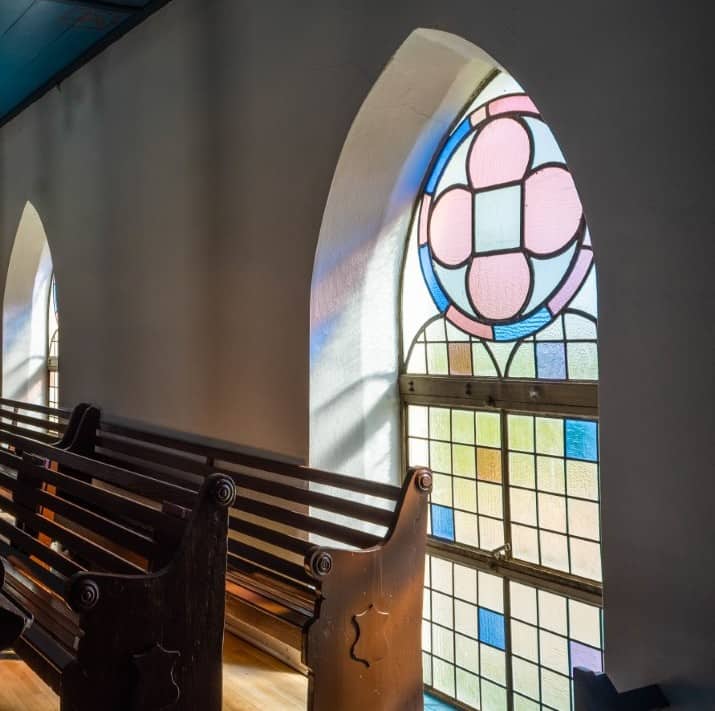
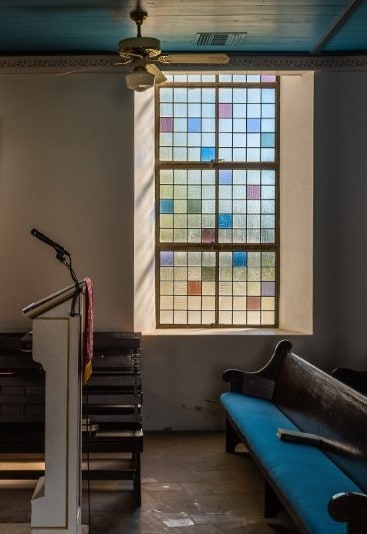
Surviving the journey: The Wends battle disease and brutal winter
The Wends of the Ben Nevis found themselves in a much different Texas than the one where I found myself in 2015. Galveston was, at the time, the largest city in the state, with a little over 4,000 people. San Antonio was the next-largest city, with a bit over 3,000. Houston was in a distant third place, with only about two thousand people.
There are perhaps only 250,000 people in the entire state (today Houston alone has nearly two and a half million residents). There was one railroad in the entire state, between Houston and Galveston. In all of Texas, there were at this time only a handful of organized Lutheran congregations, and one of those was in Houston.
At the time the Wends arrived, Galveston was in the midst of a severe yellow fever outbreak, so once they completed their business with customs, they quickly made their way inland to Houston, where they did what they could to survive the brutal winter with the limited financial resources they have available.
It is here that Kilian met the Rev. Caspar Braun, who was the pastor of the First German Evangelical Lutheran Church there, as well as president of the tiny fledgling First Evangelical Lutheran Synod of Texas (also known as the Texas Synod). Braun and his congregation are moved by the plight of the Wends, and they do all they can do to aid them through the winter. This is the beginning of a lifelong friendship for Braun and Kilian.
Despite all of their hardships, the Wends did not forget their faith.
Having survived the winter, the next order of business for the Wends was to find a suitable plot of land that was large enough to support the entire group. After an extensive search they entered into an agreement to purchase a league of land in Bastrop County (between Austin and Houston) from Absalom Delaplain, a veteran of the Texas Revolution.
Not all of the Wends were able to continue to Bastrop County, but those who are do so, and finally on March 20, 1855, they took possession of the land, where they established a town they called Serbin (“Wendish Land”) and set aside several acres of land on top of a small rise for their church and parochial school.
And yet what should have been a happy occasion for Kilian and his wife is in actuality a sad one. One of the first things the Wends did in Serbin was to establish a cemetery on the church’s land so that they could bury one of their own— little Maria Theresia Kilian, the one-month-old daughter of the Kilians, who had died on March 14.
By the time the Wends had settled into their new home and prepared the land, it was much too late in the season to effectively plant. The agricultural yield over the next two years was also poor due to severe drought conditions that persisted.
Yet despite all of their hardships, the Wends did not forget their faith, and as they were able to do so they constructed a modest dogtrot cabin; half of this building was living quarters for Kilian and his family, and the other half was to be used as a rudimentary church and school. Kilian would live in this cabin until his death in 1884, and half of it still stands on the property of St. Paul’s Lutheran Church in Serbin.
A few short years later, in 1860, Kilian’s congregation completed a second, larger building. Though still humble, this one was better able to meet the needs of the growing congregation. And before the end of the decade the congregation was in the process of building a much larger and more impressive stone church building, which was completed in 1871 and dedicated during Advent that year; at that time the second church building became a dedicated school for the congregation.
Wendish to German to English … and the rest of the story
Even with immigration to Texas, the Wends were ultimately not successful in retaining their language. After Kilian’s death, he was succeeded by his son, the Rev. Hermann Kilian, who was able to speak Wendish fluently. As the 19th century drew to a close, though, German slowly became the preferred language within the congregation as German-speaking families without Wendish heritage joined St. Paul’s.
Hermann Kilian died in 1920, and with his death the regular use of the Wendish language in Divine Services at St. Paul’s came to an end. While the church’s third pastor, the Rev. John Schmidt, was a son of the congregation, he only knew the language well enough to feel comfortable using it in private conversations with the older members who still preferred Wendish. A few short decades later, English would slowly replace German much as German had replaced Wendish.
Today, nearly 150 years after the completion of that stone church building, if you are in Serbin at six o’clock on a Saturday evening, you’ll hear the beautiful sound of the bells in the St. Paul belltower being tolled by members of the church, still reminding the people of Serbin that the following morning the doors will be open so that they may gather and hear the Word of God proclaimed.
Though the old pipe organ is today powered by an electric blower rather than being hand-pumped, and though the voices of the pastor and the congregation are in English rather than Wendish during the Divine Service, their faith remains the same as that of their ancestors who arrived in Texas in the middle of the 19th century.
This, though, is only half of the story. Thus far we’ve seen how the Wends ended up in Serbin. But how did they end up in Warda, Winchester, Green’s Creek, Giddings, Lincoln, Fedor, Manheim, Loebau, Old Dime Box, Thorndale, Noack, Austin, The Grove, Copperas Cove, Vernon, Bishop, and more? Pastor Kilian certainly never expected that outcome when he arrived in Galveston in 1854, and I didn’t expect that learning the answer to that question would also change my life.
To find out how those things happened, you’ll have to tune in to the next installment of this story!
To learn more about the Wends and their history, visit the Texas Wendish Heritage Society & Museum’s web site.
The Author
Jeremy
Clifton
Jeremy Clifton is the editor of the newsletter of the Texas Wendish Heritage Society. He has been photographing rural churches on the back roads of Texas since moving to Austin in 2015.
His two children from his first marriage, Autumn and Christopher, have Wendish heritage through their mother’s family, hence his particular interest in churches with Wendish roots.
He, his wife, and their son James are members of St. Paul’s Lutheran Church in Thorndale, where he serves as an elder and his wife teaches music at the parochial school.
His work can be seen online at lonestarbackroads.com.


Teresa Trumbly Lamsam, Ph.D., is an accomplished Social Scientist and Journalist. Passionate about establishing credibility in the digital realm, she champions transparent and trustworthy online content. She is dedicated to producing content that sparks curiosity and nourishes the heart and mind.



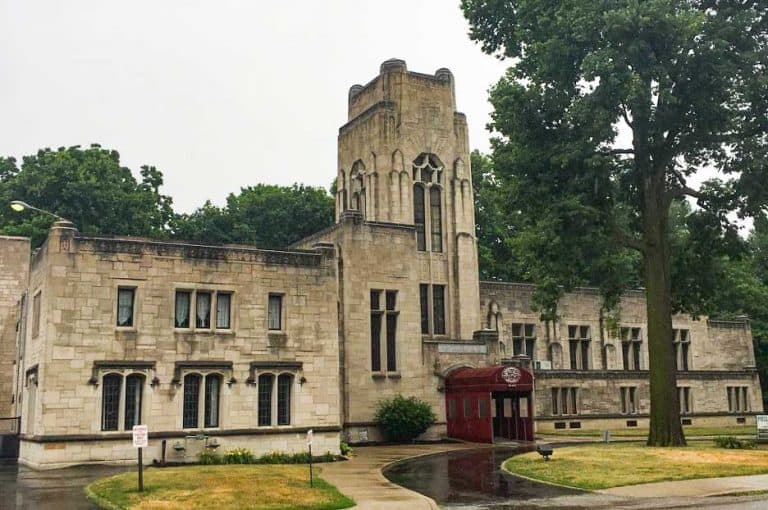





Great job, Jeremy! We appreciate your love of the Wend’s story in Texas. It’s wonderful that you are making their history and confessional Lutheran faith known to others.
Amazing story!! I too love taking pictures of old churches… this story has inspire me to do some digging and research as to the history of the founders of our faith!
Kimberly Purple
What a great story and the photos of the old churches look amazing. Thanks for sharing. Cant wait for the part 2
Thank you! Hope to have part two done soon!
What an interesting article. I think your photos look great.
Thank you!
thsi is very fascinating. i had never heard of the Sorbians or Wends before and I have German ancestors, Texan cousins and more.
Great read. The story is amazing and focused on history which is why I like it more. Liked the old churches, they are my fascination wherever I travel. Will wait for part 2.
Thank you! Hopefully I’ll have the second part pulled together soon!
Oh wow how informative and interesting. This is an amazing historic story and was good to read. Thanks for sharing x
You’re welcome – thank you for reading!
I can’t believe how much history you have of your family. You are very blessed. And what a great job you have as well!
Thank you! I am very fortunate that so much of this history has been saved, and in some ways I am merely standing on the shoulders of many people who have gone before me!
You left me obsessed about this, I have even subscribed to your blog as well. Very excited for the next part.
I am fascinated with different Churches. I love the structures and unbelievable architectures. I haven’t been in Texas. I hope to visit soon.
Hope you’re able to come out and visit Texas soon! There’s a lot to see and do!
I didn’t know all that about the Christian history in Texas thank you for sharing this is very important.
Thanks for taking the time to read! There’s so much fascinating history, and it seems not nearly enough time to find it all!
I have now idea about the Christian history in Texas. Glad you’ve shared this to me.
Is there a part 2?
Not yet. The writer had other things happening in life, but we’re just getting back to this website and hope to have many more articles. Thank you.